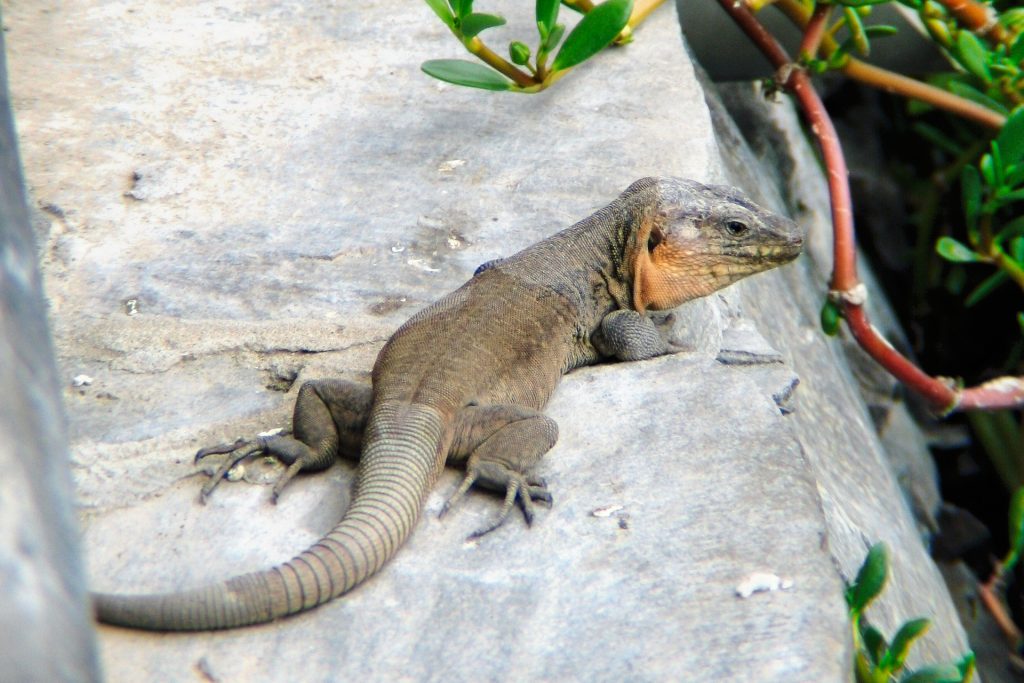
Most people’s first impression of Gran Canaria upon arrival is not of a beautiful subtropical Island, but rather of the semi-industrial barren coastline between Las Palmas and the southern resorts.
Fortunately there is a lot more to Gran Canaria than this, indeed Gran Canaria boasts tremendous diversity in it’s range of Habitats.
The Canary Islands are part of the biogeographical area known as Macaronesia, which also includes the Azores, Madeira and the Cape Verde Islands. Despite their geographical separation, the islands of Macaronesia share a great deal of their flora.
Habitat Loss
Habitats such as Laurel Forests have been mostly lost and species such as the Red Kite and Egyptian Vulture have disappeared recently. However, a reforestation program along with the protection now afforded to many sensitive areas is having a positive effect after centuries of abuse and overgrazing.
Flora
There are more than 100 species of plant that are unique to Gran Canaria. Many of the plant species which disappeared from the Mediterranean during the Ice Ages have survived in the Canary Islands, making the Canaries a region of special botanical interest.
The Habitats of the Island can be classified roughly as follows:
Semi-desert – Characterised by drought tolerant plants such as the Canary Spurge (Euphorbia balsamifera) and the emblematic Canary Cactus Spurge (Euphorbia Canariensis). Although the Cactus Spurge looks like a Cactus, it is not actually a member of the Cactus Family and is an example of evolutionary convergence – when two unrelated species evolve similar characteristics when exposed to similar environments. The latex sap of this plant is extremely irritating to the Human Eye and can cause blindness.
Pine Forest – Defined by the Canary Pine (Pinus canarienses) which can reach up to 60 meters in height and live for hundreds of years. Other plants typical of this zone include the Canary Rock Rose and various Brooms.
Laurisilva (Laurel Forest) – Only a small fragment of this habitat remains on Gran Canaria (at Los Tiles). This Habitat is characterised by Laurel and other glossy-leaved trees such as the Canary Holly (Ilex canariensis) and Wild Olive.
Palm Groves – Often found in the southern Barrancos or Gullies, the Canary Palm (Phoenix canariensis) is considered emblematic of the Island.
Although not as common in Gran Canaria as in Tenerife, The Dragon Tree (Dracaena drago) is also found in these areas. The Red Sap of this tree, ‘the Dragon’s Blood’, has had many uses over the centuries from Varnish for Violins to Witchcraft. The tree is extremely slow growing and takes 10 – 15 years to reach maturity. The Trees then only flower every 10 – 15 years and this flowering is a magnificent sight on an older tree (it is said that one specimen on neighbouring Tenerife is 650 years old).
Maspalomas Dunes and Lagoon – The Sand Dunes and Lagoon at Maspalomas are a unique habitat on the Island. The Dunes’ plants mainly consist of salt-tolerant species such as Canary Islands Tamarisk (Tamarix canariensis) and Sea-grape (Zygophillum fontanesi).
During the 19th Century there was an enormous Tern Colony at the dunes, however this had disappeared by the early 20th Century. The Lagoon itself was part of a large Salt Marsh, which has been reclaimed. Thanks to recent conservation, the Lagoon has become an important passage site migratory birds.
Fauna
Mammals
Most of the Mammals, with the exception of the Bats and the Osorio Shrew, have probably been introduced deliberately or accidentally by man.
Osorio Shrew (Crocidura osorio) – only discovered in 1989, this secretive shrew is only found in the humid parts of northern Gran Canaria.
Algerian Hedgehog (Erinaceus algirus) – This species was introduced from north Africa.
House Mouse (Mus musculus) – Found throughout the Island.
Birds
Many of the birds found in the Canary Islands are either endemic species or subspecies, with many examples of races unique to individual Islands. This phenomenon is often found on islands where species are allowed to evolve in isolation.
Canary Island Chiffchaff (Phylloscopus canariensis) – Endemic to the western Canary Islands and found throughout the Island.
Blue Chaffinch (Fringilla teydea polatzeki) – This bird is only found in Gran Canaria and Tenerife, with each island having it’s own subspecies.
Great Spotted Woodpecker Endemic subspecies (Dendrocopos major thanneri) found in old Pine Woods.
Blue Tit Subspecies (Parus caeruleus teneriffae) – Subspecies found in Gran Canaria, Tenerife and La Gomera.
Atlantic Canary (Serinus canaria) – This species can be found throughout the Canary Islands, Madeira and the Azores.
Along with the native birds, populations of Parakeets and Parrots are now established – especially around the Resorts (often in Hotel Gardens).
Reptiles
Gran Canaria Giant Lizard (Gallotia stehlini) – This species, which is only found on Gran Canaria, can grow up to 80cm long! Common throughout the island, this omnivore will eat almost anything. While similar species in Tenerife, La Gomera and El Hierro are in danger this species has proved more adaptable to humans.
Haria Lizard – subspecies of the Lizard also found in Lanzarote and Fuerteventura
Boettger’s Gecko – also found in El Hierro and the Salvage Islands
Gran Canaria Skink (Chalcides simonyi) – found only in the Eastern Canary Islands – sometimes with a bright blue tail.
Mediterranean House Gecko (Hemidactylus turcicus) – often seen clinging to walls and ceilings.
Amphibians
Two frogs species can be found on the Island, both of which were introduced. The Stripeless Tree Frog and Western Marsh Frog can be found in reservoirs, ravine pools and plantations.

Leave a Reply